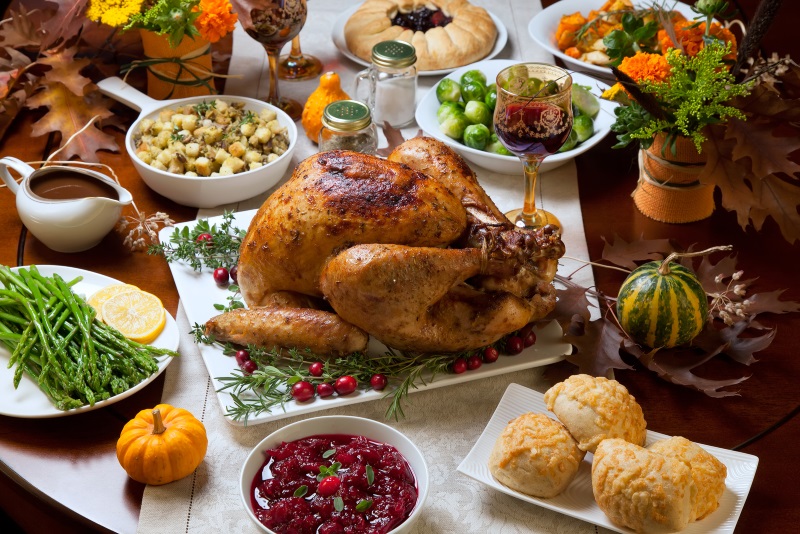
The Thanksgiving Holiday in the U.S.
Diana Hulboy
Many thanks to my Eurofins Abraxis colleague Blake Champagne for his contribution of the true history of Thanksgiving.
American children are taught that the first European settlers were saved from starvation by the generosity of the local Amerindian tribes. They held a feast to celebrate their new friendship, starting a regional tradition. Thanksgiving was made a national holiday (but only in the Northern states) a century afterwards by President Abraham Lincoln during the American Civil War. In World War II, Southern sailors brought the custom home, making it a truly universal holiday for all citizens of the United States.
These days, Thanksgiving has transformed. For better or worse, it is an opportunity for merchants to round out their sales for the year. There are Thanksgiving-themed greeting cards, candy, and decorations (orange and brown colors dominate); and of course liquor and groceries for the big meal. Also, since Thanksgiving always takes place on a Thursday (near the end of November), most businesses are closed the next day, while merchants open early for massive ‘Black Friday’ sales. Customers queue up outside in the cold dark hours after midnight to buy deeply-discounted items for the December gift-giving season.
Thanksgiving also has retained its core elements. Religious for some, secular for others, it brings friends and relatives together over a meal to celebrate and appreciate family, food and shelter, freedom, and many other things we are fortunate to have.

The centerpiece of most tables is roasted turkey filled with bread-based ‘stuffing’ or ‘dressing’. Alternatives are ham, deep fried turkey, ‘tofurky’ (tofu), and turducken (turkey-duck-chicken). Common side dishes are mashed potatoes; yams/sweet potatoes; cranberry sauce; green bean casserole; cooked carrots, corn, Brussels sprouts; soft white bread rolls/cornbread. Later, there are of course multiple desserts: pumpkin, pecan, and apple pies; cheesecake (my sister’s is the best); ice cream; and more.
During and after the meal, politics may or may not be discussed in these divided times. In most U.S. households, Thanksgiving day isn’t complete without watching a game or two of (American) football. Even family members who don’t normally partake are drawn into the game.
Parting at the end of the day is a mix of relief, sadness, and contentment. Relief, especially for the cook(s), because it is a very long day. Sadness, because many American families, like mine, have spread across the country. Contentment, because it is a wonderful holiday indeed.
